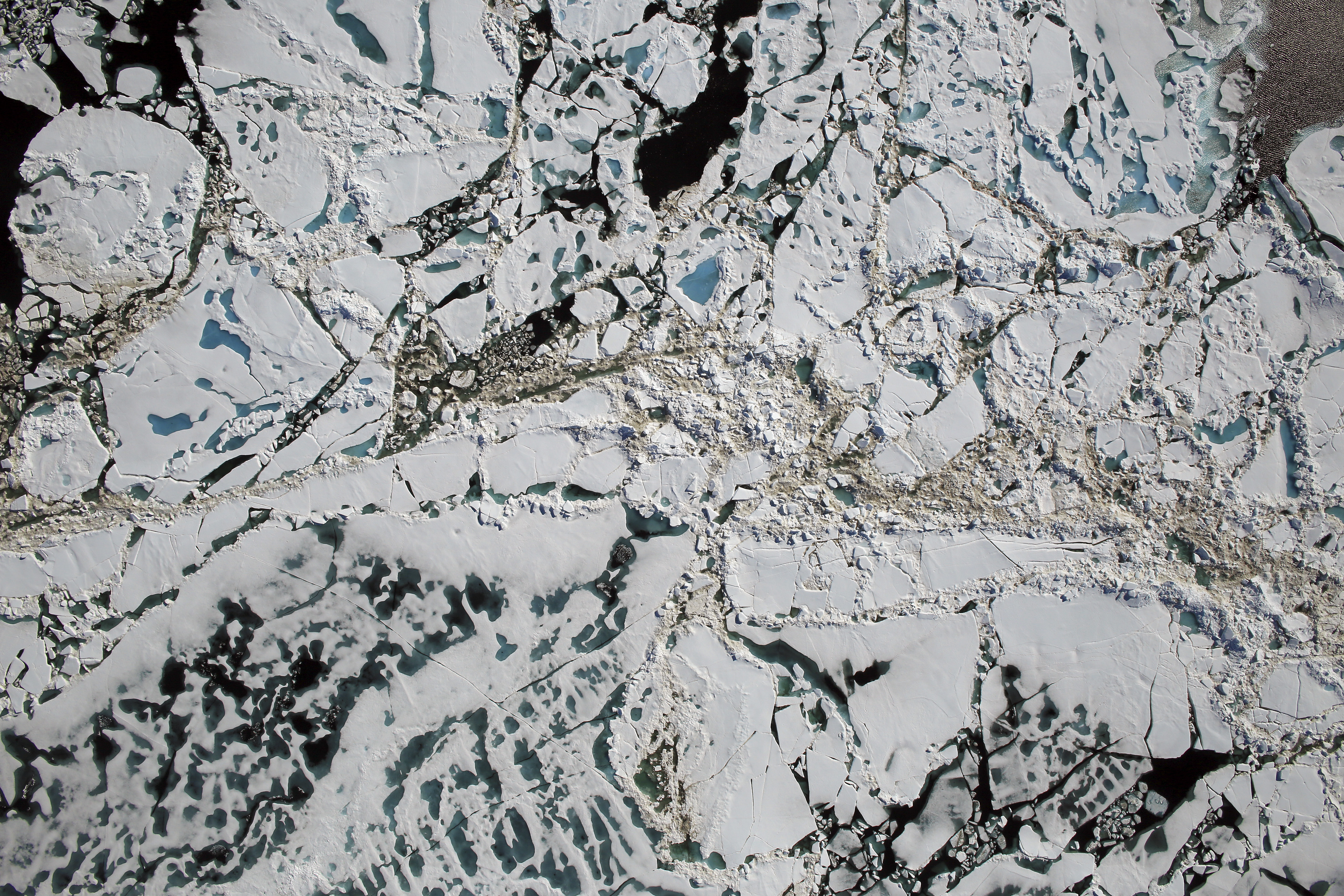Speedier sea ice in warming Arctic could spread pollution farther
In the Arctic, bad news for one country could mean bad news for all. As the region warms faster than the rest of the planet, new research demonstrates how pollution — from oil spills to organic contaminants — could be passed from one Arctic neighbor to another.
In a new study released in the journal Earth’s Future, scientists from Columbia and McGill universities examined the movement of sea ice from country to country in the Arctic Ocean. Comparing data from 1988 to 2014, they found that sea ice is moving faster between destinations, increasing the number of international ice-based exchanges.

The study analyzed 239,023 ice formations in the Arctic and found that the movement of sea ice accelerated 14 percent each decade. Ice from Russian ice shelves, which produce more than half of the region’s sea ice, traveled to the exclusive economic zones of other countries 46 percent faster, where it eventually melted. North American sea ice traveled to European waters and melted 37 percent faster in the years after 2000 when compared to pre-2000 data.
While most sea ice stays and melts where it forms, some ice breaks off and travels in a mostly westerly direction — ice from Russia floats to Norway and Greenland waters, the study found; ice from Alaska waters primarily travels to Russian waters; Alaska receives most of its ice from Canada.
The study found that 24 percent of sea ice melted without straying and 52 percent melts within 62 miles of its origin — well within a nation’s exclusive economic zone, which extends 200 miles off a country’s coastline.
But chunks of ice drifted. Almost a quarter of the sea ice that formed inside an exclusive economic zone eventually strayed, totaling more than 247 million acres of ice.
Scientists attribute this speedier sea ice to warmer Arctic summers. As temperatures increase in the region, the amount of sea ice formed decreases, and the ice that does form is thinner. Thin ice can be carried farther by wind and ocean currents than thick ice.
As Arctic nations continue to share ice at a faster clip, the potential increases for pollutants to travel farther from where they’re dumped. That movement becomes especially important when it comes to oil spills, the study’s authors say.
“A lot of damage will be local and go downstream, but some of it will escape and affect other regions,” said Bruno Tremblay, co-author of the study and researcher at McGill University and Columbia’s Lamont-Doherty Earth Observatory. “It’s not like the Gulf of Mexico, where it’s contained.”
With less ice in Arctic regions, scientists have observed a “significant increase” in oil and gas exploration in the Arctic Ocean, where the U.S. Geological Survey estimates that 13 percent of the world’s remaining oil is located.
More drilling combined with faster sea ice movement can lead to disaster if an oil spill occurs in the region.
In a model of the “worst-case scenario,” in which an oil well blows out at the end of the summer drilling season, Tremblay and a team of researchers found that a Beaufort Sea spill could be carried by sea ice over 745 miles by the next April. Cleanup efforts would be stymied by heavy ice and 24-hour darkness in winter months.
“As bad as Exxon Valdez and Deepwater Horizon were, just imagine something of that magnitude only it is pitch black and covered in ice,” said Robert Newton, lead author of the Earth’s Future study and oceanographer at Lamont-Doherty. “It’s hard to imagine how we are going to manage that.”
In an interview, Newton said sources of pollution besides oil can be dragged along with the ice, including agricultural pesticides and microplastics. Because contaminants break down more slowly in Arctic waters compared to warmer climates, pollution that makes its way to the Arctic from lower latitudes sticks around longer.
“The popular impression is that the Arctic is a pristine, white place, but, in fact, there is a lot of industry and it is a place of cumulation for pollution in lower latitudes,” Newton said.
Both Newton and Tremblay noted that the research highlights how interconnected Arctic countries are, and how an action by one country could impact the whole region.
Twila Moon, a research associate with the National Snow and Ice Data Center, said that she wasn’t surprised sea ice is being affected by a warming climate.
“If not entirely clear to folks already at this point — we should expect change,” Moon wrote in an email. “A few may be locally or regionally beneficial, but many will be negative and certainly almost all of them will complicate decisions, international relations and our ability to plan for the future.”
But if greenhouse gases like carbon dioxide aren’t reduced and the Arctic continues to warm, the movement of summer sea ice might stop altogether, the researchers say — there won’t be enough ice to begin with.
“At some point, the melting in summer and spring will be so extensive that even if the ice moves quickly, there is very little of it to get across the Arctic,” Newton said. “But we don’t know when that line will be crossed.”